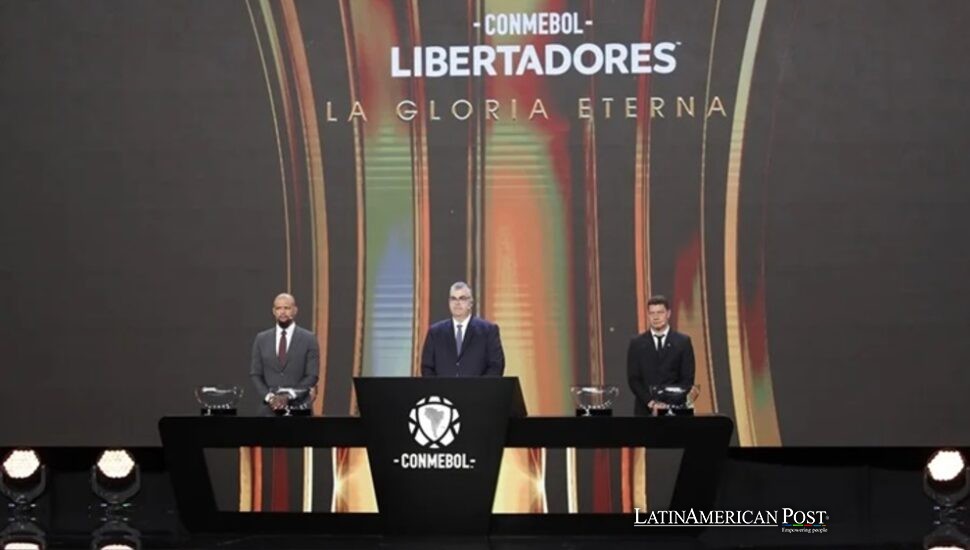South America Copa Libertadores 2025 Reignites Rivalries and Legendary Competitions

The 66th Copa Libertadores began as 32 teams competed for South America’s top club trophy. It proceeds from group stages toward a single-match final on November 29. But the contest offers drama and tension across a continent – a place passionate about football.
Can Brazil Be Stopped?
Year after year, the Copa Libertadores illustrates how sure football powerhouses have gained a commanding edge. In the tournament’s early decades, Uruguay led the way, and then Argentina reigned supreme for multiple eras. Yet recently, Brazil has built an unmatched level of domination. Over the past six editions, Brazilian clubs have claimed every trophy, regularly fielding both finalists in many seasons. This wave of success is fueled by surging finances in Brazil’s domestic league. The biggest clubs—Flamengo, Palmeiras, Atlético Mineiro, and others—tap into lucrative broadcast deals and corporate sponsorships, allowing them to sign South America’s top talent.
As a result, several Brazilian squads are stocked with potent lineups brimming with foreign stars. Argentinian strikers, Colombian wingers, Paraguayan defenders—plenty of non-Brazilian players now don the shirts of Flamengo or Palmeiras. More than ever, these clubs look like multinational machines, overshadowing once-storied outfits from other nations. It makes rival supporters question whether some team can stop the powerful green-and-red group in this 66th contest. Maybe River Plate, a squad with a history besides four past wins, will push back. Argentina puts forth Racing Club, Estudiantes, next to the improving Talleres from Córdoba.
Atlético Nacional from Colombia looks renewed—the club wants to regain the special feel of its 2016 victory. Paraguay’s trio—Olimpia, Cerro Porteño, Libertad—have significant pedigree, and Ecuador keeps surprising with the likes of Barcelona SC, Liga de Quito, and Independiente del Valle.
In that sense, this season feels more unpredictable, though the Brazilian clubs remain apparent favorites. The looming subtext, however, is that Brazil sits on the cusp of equaling Argentina’s all-time mark of 25 Libertadores titles. If a Brazilian side lifts the trophy again this year, it becomes 25 apiece—an unprecedented parity. For some Argentinian supporters, it conjures anxiety about losing their long-held status. For neutral fans, it merely heightens the rivalry: can anyone end Brazil’s hegemony, or will the country cement total supremacy?
The Club World Cup Factor—A Blessing or Burden?
The Copa Libertadores is South America’s most significant reward, but the FIFA Club World Cup schedule change later this year brings a fresh aspect. The Libertadores victor met a short elimination competition to decide worldwide power. The broader competition asks for increased time, games, and assets. However, many South American clubs accept the opportunity for worldwide distinction and wealth. Brazil altered its schedule to fit these additional needs – underscoring the value of appearing on a global scene.
The plans present difficulties. Clubs “like River Plate, Flamengo next to Palmeiras,” which met requirements for the Club World Cup, must handle high summer temperatures in North America between late June and mid-July. They juggle domestic league games and the Libertadores themselves – a demanding workload that can damage best work or cause injuries. Their South American rivals will use that time to relax or hone tactics. If “a team like Boca Juniors or Nacional of Uruguay” can focus solely on the Libertadores, a pause in the demanding schedule might be a positive factor.
Morale, as well as onward progress, requires thought. Teams returning from a tough international competition could feel worn out, particularly if they don’t achieve their Club World Cup goals. Sides absent this additional burden stay sharp besides eager in the elimination stages – consequently, this makes for an element of unpredictability. Some supporters speculate that the Libertadores bracket could open up for a surprise champion, with Brazilian squads expending energy abroad. Indeed, the congested schedule often punishes the clubs that aim for multiple trophies. So even though the competition for glory draws them forward, the physical toll might even out the field.
A Stage for New Icons—And Enduring Veterans
In addition to the overarching battles, the Copa Libertadores remain a vast arena where emerging talents showcase skills that can catapult them onto global radars. Last year’s tournament saw Palmeiras hand first starts to a teenager known for his flair and finishing—a player who soon turned heads, culminating in a blockbuster transfer to Europe. This year, scouts will watch for the next prodigy, potentially another star from the youth academy of Ecuador’s Independiente del Valle. Located close to Quito, the club became a place that attracts important scouts because it made players like Moises Caicedo and Kendry Paez. A quick winger or an inventive midfielder plays in the group phase – a few good shows start strong interest.
Yet, it’s not just about the kids. The Libertadores is famous for welcoming grizzled veterans who refuse to fade from the spotlight. Roque Santa Cruz, at 43, leads Paraguay’s Libertad, plus he competes with Oscar Cardozo, a man of 42, for the spot. Watchers will find offensive teams containing players in their 30s or 40s who face young defenders. These disparities improve the contest, as it combines periods in one event.
However, prominent European performers who competed in top fields resurfaced in these groups. A former Manchester United athlete or a mature celebrity from Serie A or La Liga plays a final stint in the Libertadores. Since watchers favor this, youthful entries combined with older icons build an aura of instability. Each game guarantees remarkable moments. For instance, a teenager scores a closing goal, and a forward in their 40s shows that wisdom is valuable.
From the vantage point of fans across South America, the magic of the Libertadores is precisely this blend of tradition, rivalry, and personal journeys. Clubs that have soared to continental glory in the past face off with hungry challengers forging new histories. People hold their year hopes in the complex streets of Buenos Aires and at Quito’s heights, from noisy Rio fans at Maracanã to ardent crowds in Asunción.
The final set for November 29 includes everything – a whole continent’s fixation closes in one competition. Local talk circulates, be it in Brasília or Montevideo. That is of little importance to fans keen on the trophy. They travel in large numbers or assemble near screens. They feel all the moments of a famous contest – a competition that embodies defeat and improvement next to peculiar marvels.
Also Read: In Cuba, Baseball Yields as Soccer Scores More Goals
Will Brazil again reign supreme, tying Argentina’s record of 25 titles? Or can an outsider break the streak, harnessing rest and raw passion to pull off a shock upset? Over the following months, 32 clubs will be reduced to one champion, forging new narratives in a saga that has entranced South America for over half a century. In the Copa Libertadores, victory is everything, and the path is never easy—exactly how fans across the continent have always loved it.





